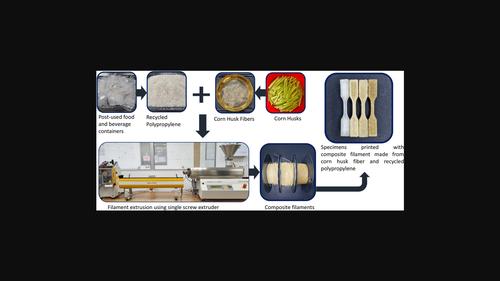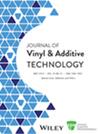Effects of corn husk fiber as filler in recycled single-use polypropylene for fused filament fabrication
Abstract
Fused filament fabrication (FFF) is one of the most popular 3D printing approaches among end-users due to its lower cost, ease of operation, and wide range of material choices. However, the use of composite filament produced from recycled plastic and agriculture waste is still relatively uncommon. This research focuses on developing composite filament from corn husk fiber (CHF) and recycled single-use polypropylene for FFF. In this work, neat recycled polypropylene (rPP) and rPP/CHF composites were extruded into filament for FFF printing. It was observed that increasing the CHF content would reduce the print quality of the parts, as visible air gaps and voids were found on the printed surface and within the layers. Nevertheless, these issues were able to be overcome by adjusting the printing temperature and increasing the extrusion percentage during the printing process. The melt flow index results indicate that a higher CHF content would reduce the melt flow of the extruded rPP/CHF composite during printing, potentially affecting the quality of the printed parts. On the other hand, increasing the temperature enhanced the melt flow of the composite, which was beneficial for the printing process. When a small amount of CHF was added to the rPP, the printed part exhibited the highest tensile strength due to the reinforcing effect of the fibers. However, the tensile strength of printed parts using rPP/CHF composite filament decreased with higher CHF content. Additionally, higher CHF content resulted in printed composite parts that were more rigid and stiffer. It also reduced warpage on the printed specimens made with this composite, but it is important to note that warpage of the printed specimen is not directly correlated to crystallinity caused by nucleating effect of CHF. The rPP/CHF composite filament did exhibit earlier thermal degradation due to the addition of more CHF. However, this should not affect the printing process when temperature not beyond 230°C. This study highlights the potential of utilizing single-use PP and fibers extracted from corn husk as feedstock for 3D printing. The findings expand the possibilities for recycling and employing agricultural waste in sustainable additive manufacturing processes.
Highlights
- Utilizes single-use PP and CHF in developing composite filaments, contributing to sustainability and reducing plastic waste.
- This research offers a sustainable approach by utilizing waste materials as feedstock for FFF-based 3D printing, which able to reduce the environmental pollution caused by disposal of single-use plastic and promotes recycling practices.


 求助内容:
求助内容: 应助结果提醒方式:
应助结果提醒方式:


